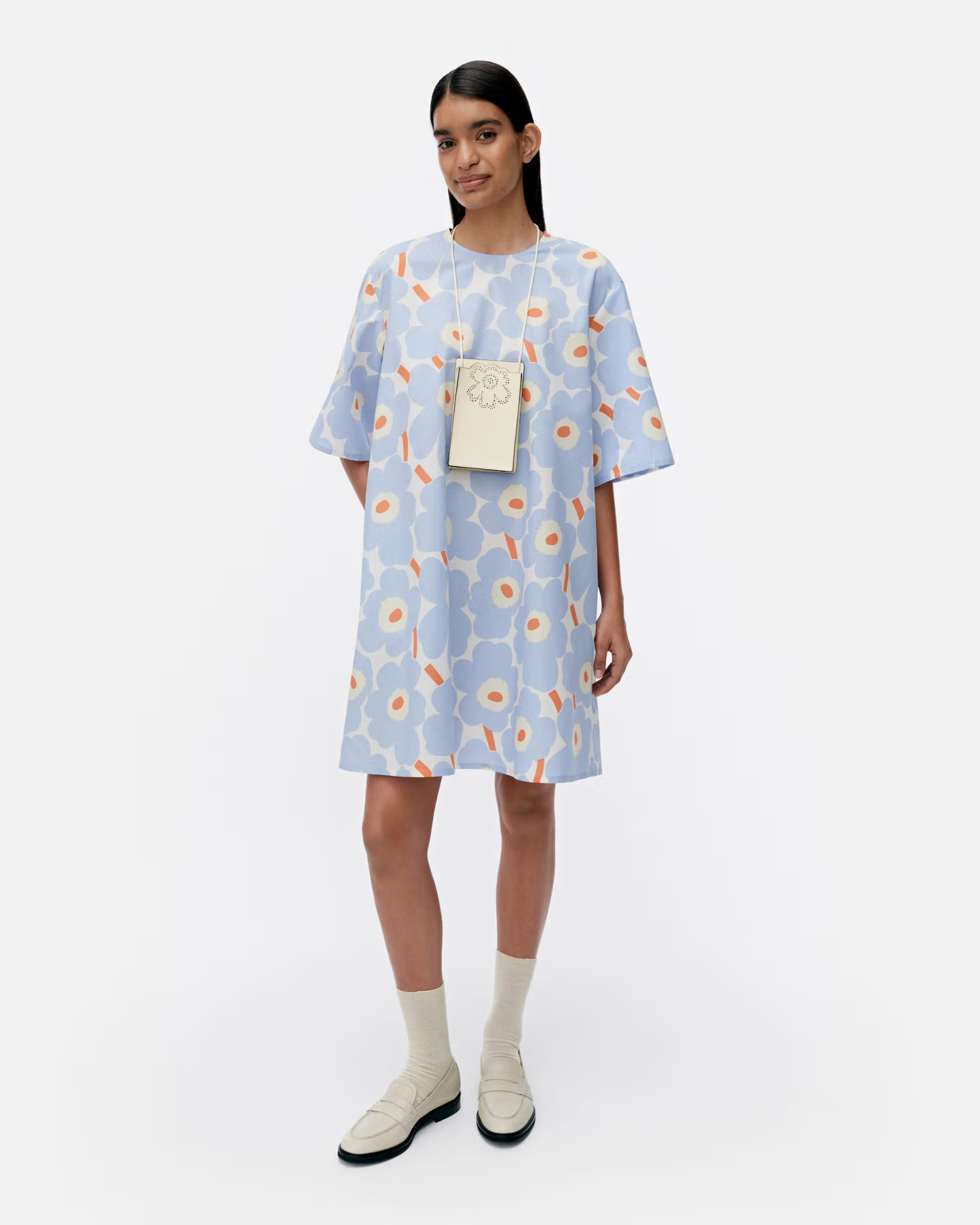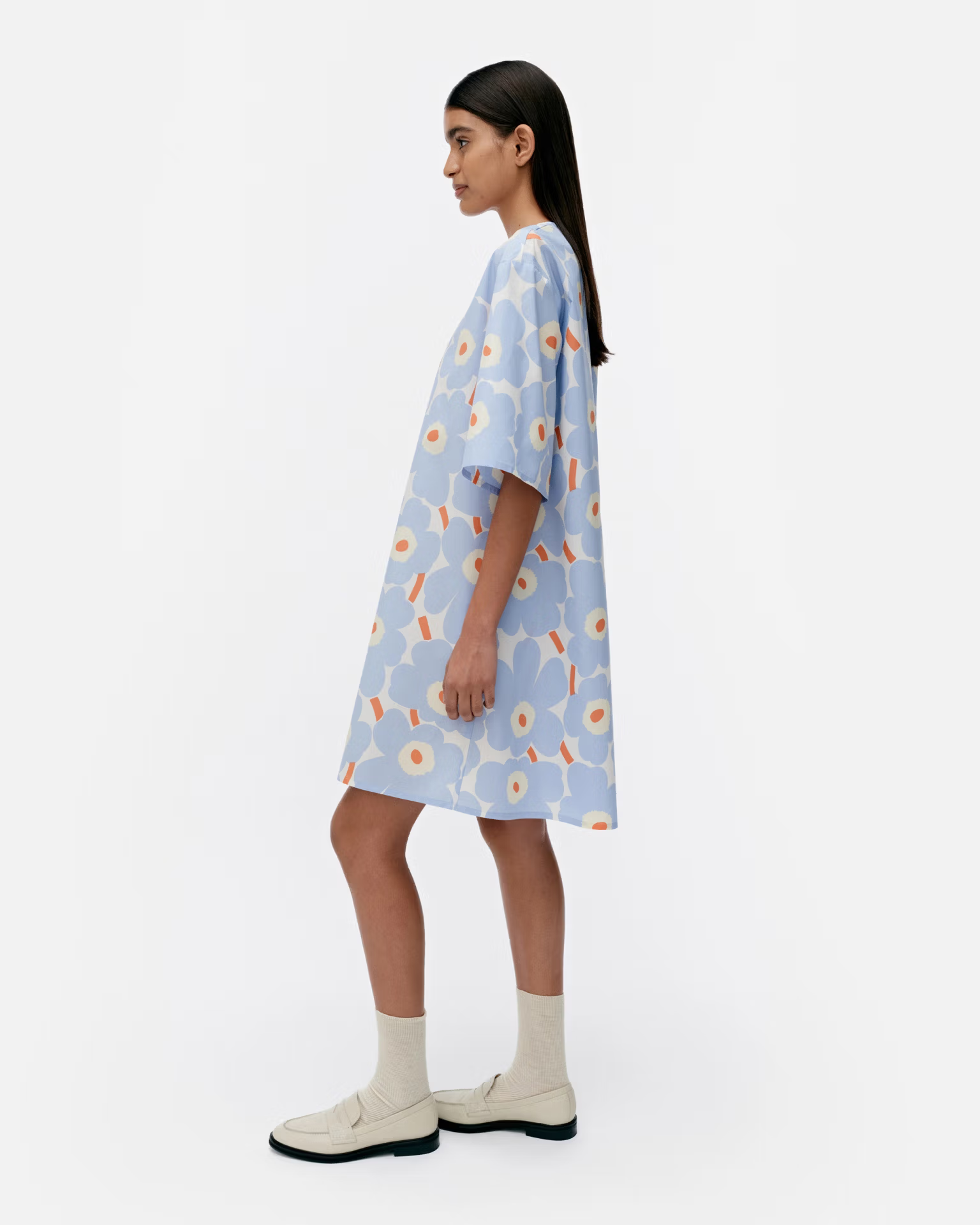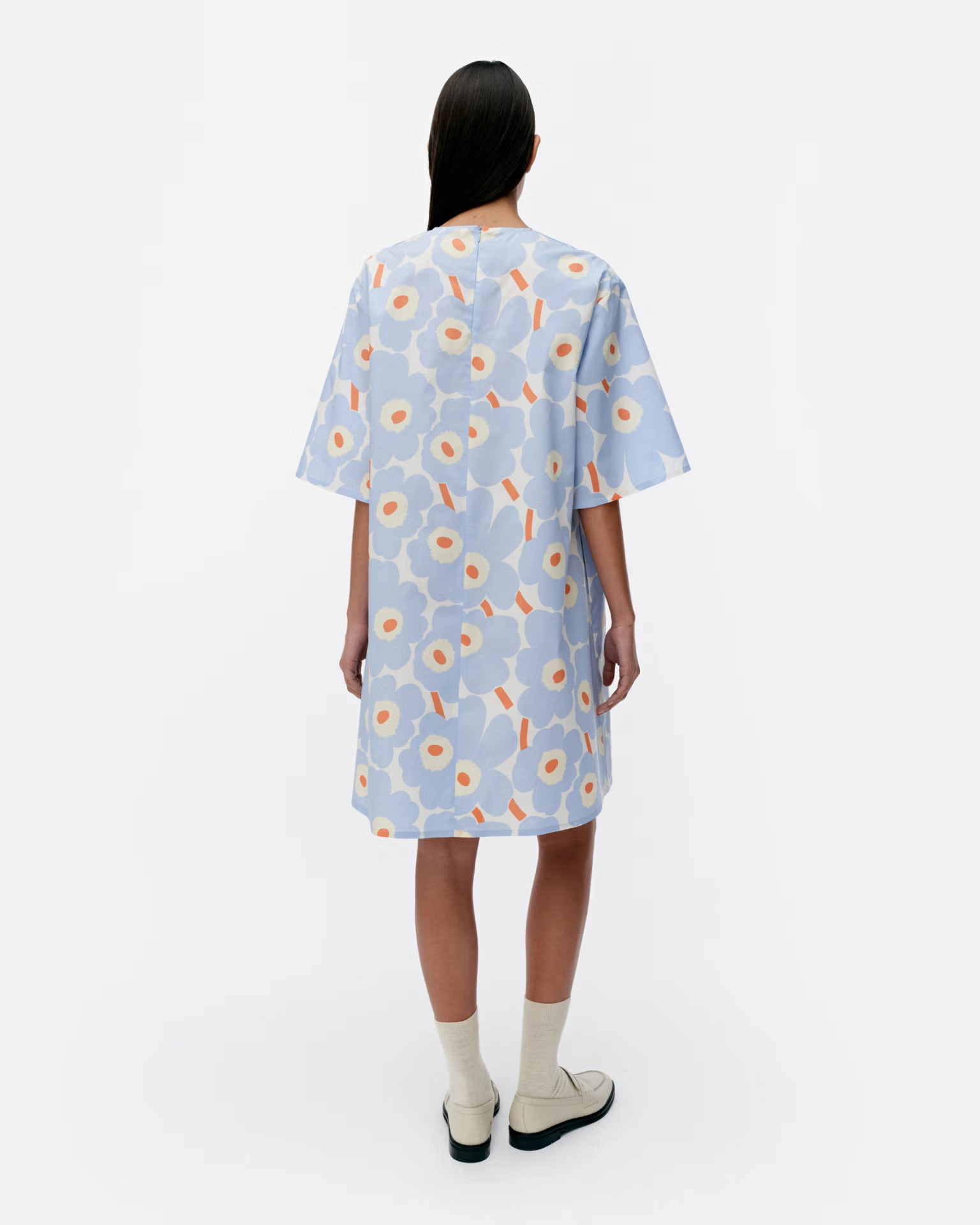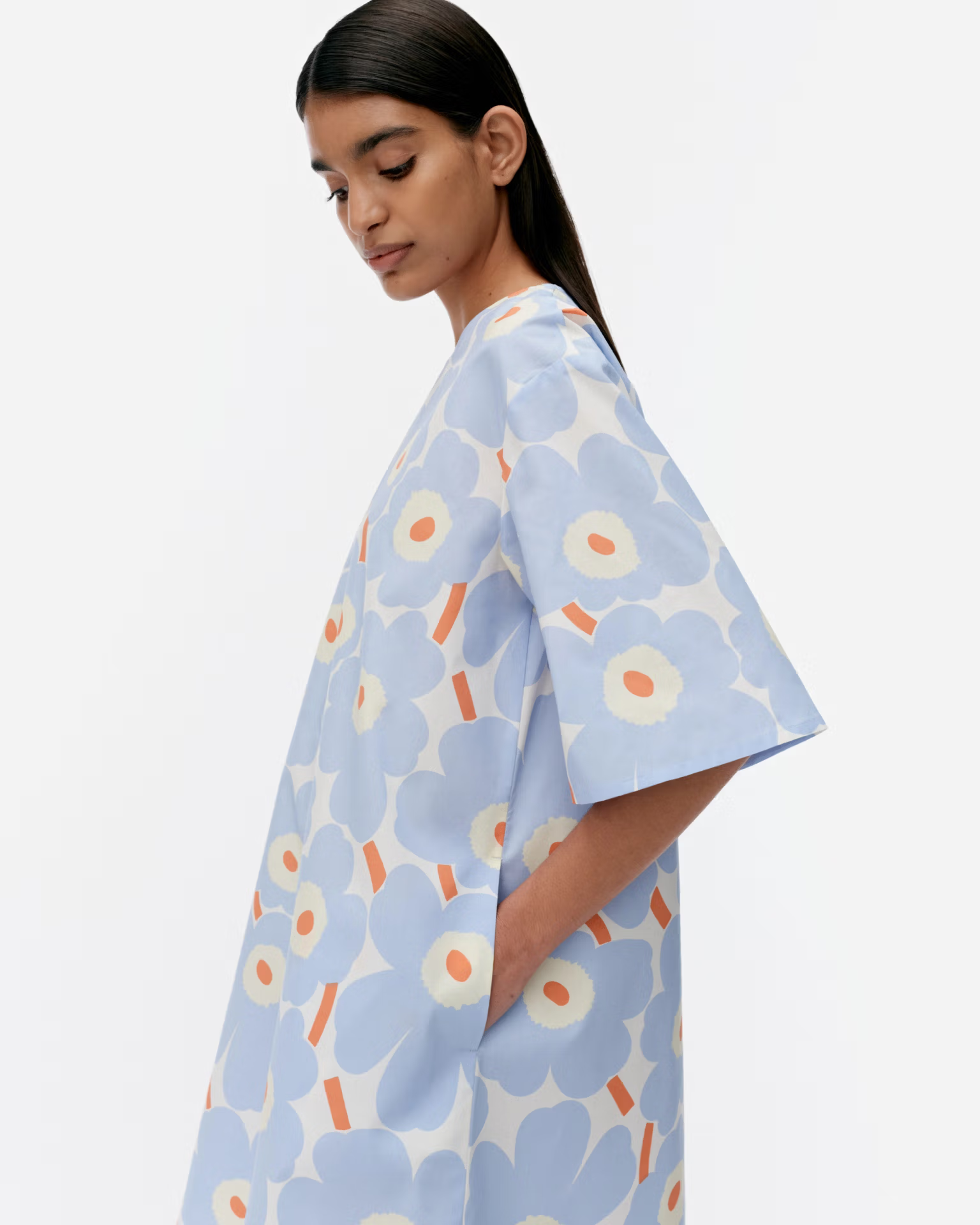



Vohveli Unikko
Dress
The Vohveli dress is made of organic cotton, and it has a relaxed, A-line fit. The dress features the Unikko pattern, which is printed in Helsinki. The dress has an O-neck, a concealed zipper in the back seam, side seam pockets, and loose, elbow-length sleeves.
Marimekko’s famous pattern Unikko was born in 1964 in a time when the design house’s collections featured mostly abstract prints. Designer Maija Isola wanted to create something interesting from this organic theme and designed an entire range of floral prints. Today, the iconic flower represents creativity.
Unikko
Unikko was created by Maija Isola in 1964 and has since become an international icon of print design. The founder of Marimekko, Armi Ratia, believed that it was not possible to faithfully capture the true essence of real flowers in print, which is why floral prints were earlier excluded from Marimekko collections. So, Maija Isola designed Unikko to be an abstraction of a flower rather than a photorealistic rendition. Today, Unikko is a powerful emblem of joy and creativity, seamlessly integrated into Marimekko's design identity.